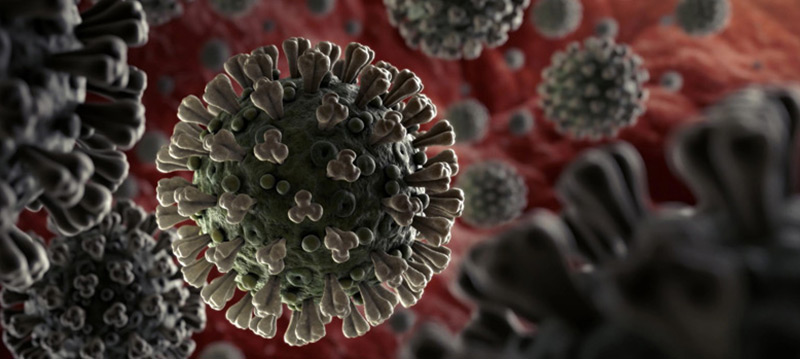
Coronaviruses are a family of viruses causing infection in humans and a variety of animals including birds and mammals such as camels, cats and bats. Coronaviruses are zoonotic, which means they can transmit between animals and humans.
When animal coronaviruses evolve, infect people and then spread between humans, it can lead to outbreaks.
The 2019-nCoV identified in China is a new strain of coronavirus that has not been previously identified in humans.
How severe are the infections caused by 2019-nCoV?
The virus can cause mild, flu-like symptoms as well as severe disease. People with existing chronic conditions seem to be more vulnerable to severe illness. Pre-existing conditions reported so far include cardiovascular disorders, diabetes, liver disorders, and other respiratory diseases.
How does it spread?
The virus is most likely to spread from person to person through:
- direct contact with a person whilst they are infectious
- contact with droplets when a person with a confirmed infection coughs or sneezes; or
- touching objects or surfaces (such as doorknobs or tables) that were contaminated by droplets from secretions coughed or sneezed from a person with a confirmed infection, and then touching your mouth or face.
Who should be tested for coronavirus?
Patients with sudden onset of at least one of the following:
- cough
- sore throat,
- shortness of breath
AND in the 14 days prior to the onset of symptoms, fulfilled at least one of the following criteria:
- Had close contact with a 2019-nCoV patient (working together in close proximity or sharing the same classroom environment, travelling together in any kind of conveyance, living in the same household, healthcare-associated exposure)
- Had a history of travel to areas with ongoing community transmission of 2019-nCoV;
- Worked in or attended a healthcare facility where patients with 2019-nCoV infections were being treated.
How is it diagnosed?
Diagnosis is made from the history you provide the doctor and the doctor may choose to take swabs from your nose and throat in the first instance. You may also have blood tests.
What are the symptoms?
According to current knowledge, the clinical signs and symptoms of 2019-nCoV disease include fever, coughing and difficulty breathing.
What is the treatment?
There is no specific treatment for this disease. Supportive care is the mainstay (e.g. supportive therapy and monitoring – oxygen therapy, fluid management, antivirals) for infected persons can be highly effective.
Are there any vaccinations?
There are currently no vaccines against coronaviruses.
What is a close contact?
Close contact is when there is greater than 15 minutes face-to-face contact with a person affected in any setting, or the sharing of a closed space with a person affected for a prolonged period (e.g. more than 2 hours).
It can be
- People living in the same household or household-like setting (e.g. in a boarding school or hostel).
- Direct contact with the body fluids (in case of health workers – laboratory specimens of a case without recommended personal protection equipment).
- A person in the same hospital room when an aerosol generating procedure is undertaken on the case, without recommended PPE.
What is a casual contact?
Casual contact is defined as any person having less than 15 minutes face-to-face contact with a symptomatic confirmed case in any setting or sharing a closed space with an affected person / confirmed case for less than 2 hours.
Other casual contact may include:
- Extended family groups, e.g. in an Aboriginal community.
- Aircraft passengers who were seated in the same row as the case, or in the two rows in front or two rows behind a symptomatic confirmed case.
- All crew-members on an aircraft who worked in the same cabin area as a symptomatic confirmed case.
